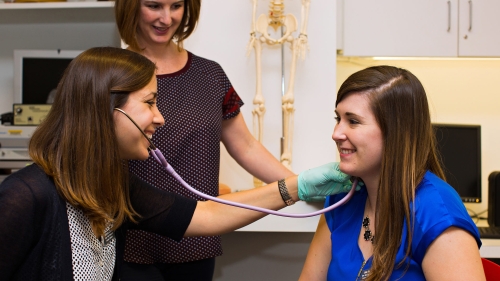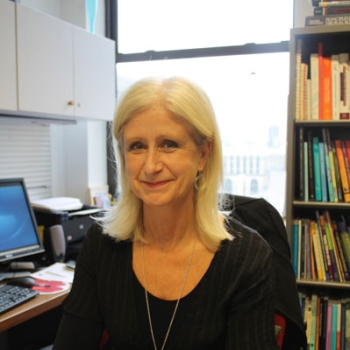

Christina Reuterskiöld
Small Talk Child Language Development and Disorders Lab
Communicative Sciences and Disorders
Dr. Christina Reuterskiöld's research focuses on developmental language disorder in children. Her main interest is the influence of non-linguistic and linguistic context on language processing and production. Dr. Reuterskiöld is certified as a Speech Language Pathologist by the American Speech Language and Hearing Association (ASHA) and the Swedish Board of Social Care. She holds a faculty affiliation in Department of Clinical Sciences at Lund University in Sweden, where students from NYU attend a study abroad program.
Small Talk Child Language Development and Disorders Lab with descriptions of current research projects.
Selected Publications
-
Clark, G. & Reuterskiöld, C. Orthographic Support for Word Learning in Clinical Populations: A Systematic Review (in press). Language Speech and Hearing Services in the Schools.
-
Hallin, A. E. & Reuterskiöld, C., 2021. Värt att veta om språkstörning. (Worth knowing about developmental language disorder). Natur och Kultur, Stockholm, Sweden
-
Siyambalapitiya, S., Paynter, J., Nair, V., Reuterskiöld, C., Tucker, M. &. Trembath, D., 2021. Longitudinal social-communication outcomes in children with autism raised in bi/multilingual environments. Journal of Autism and Developmental Disorders
- Reuterskiöld, C., Hallin, A. E., Nair, V., & Hansson, K. 2021. Morphosyntactic challenges for Swedish-speaking children with developmental language disorders in comparison with L1 and L2 peers: A review. Applied Linguistics 1-20
-
Moses, N, Reuterskiöld, C. & Klein, H. 2020. Language sampling and semantics in dynamic assessment: value, biases, solutions. Journal of the National Black Association for Speech Language and Hearing (JNBASLH) Volume 15, Issue 3
-
Jing, L, Vermeire, K, Mangino, A. & Reuterskiöld, C. 2019. Rhyme awareness in children with normal hearing and children with cochlear implants: an exploratory study. Frontiers in Psychology doi: 10.3389/fpsyg.2019.02072
- Hallin, A. E. & Reuterskiöld, C. 2018. Effects of frequency and morpho-syntactic structure on error detection, correction, and repetition in Swedish-speaking children. Applied Psycholinguistics
- Hallin, A., E. & Reuterskiöld, C. 2017. Error type and lexical frequency effects: Error detection in Swedish children with language impairment. Journal of Speech, Language and Hearing Research, Vol. 60, 2924-2934, doi:10.1044/2017_JSLHR-L-16-0294
- Van Den Heuvel, E., Reuterskiöld, C., Solot, C., Manders, E., Swillen, A. & Zink, I. 2016. Referential Communication Abilities in Children with 22q11.2 Deletion Syndrome. International Journal of Speech-Language Pathology
- Hallin, AE., Garcia, G. D., & Reuterskiöld, C. 2016. The Use of Causal Language and Filled Pauses in Children with and without Autism. Child Development Research, Volume 2016, ID 8535868
- Reuterskiöld, C. & Grigos, M. 2015. Nonword Repetition and Speech Motor Control in Children. Biomed Research International. Volume 2015, 683279.
- Reuterskiöld, C. & Sidtis, D. Incidental Learning of Idioms in Children. 2012. Child Language Teaching and Therapy. 29 (2) 219-231.
- Reuterskiöld, C., Hansson, K. & Sahlen, B. 2011. Narrative Skills in Swedish Children with Language Impairment: Content and Cohesion. Journal of Communication Disorders, 44, 733–744.
- Samuelsson, C., Reuterskiöld, C., Nettelbladt, U., & Sahlen, B, 2011. Production and Perception of Metrical Patterns in Swedish Children with Language Impairment. Logopedics, Phoniatrics and Vocology 36(1), 1-11.
- Reuterskiöld, C., Ibertsson, T. and Sahlén, B. 2010. Venturing beyond the sentence level. Narrative skills in Swedish children with hearing impairment. The Volta Review Vol 110(3), 389–406.
